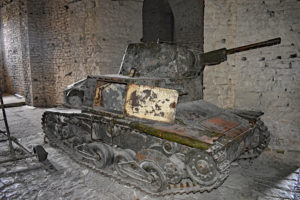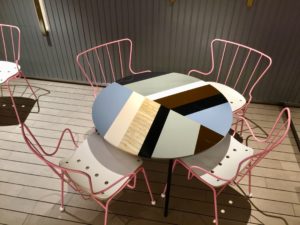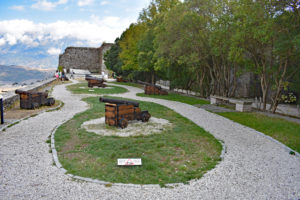The city of Gjirokastra, in south west Albania, is noted for amongst other things, its castle, part of a defence chain across the country.
Built in the 12th century, it was the most intact castle we’d seen in the country, but not inhabited like the castles at “Kruja”:https://www.silvertraveladvisor.com/review/attraction/200217-review-kruja-castle and Berat.
The castle dominates the town from its hill-top location at 336m above sea level. There are two routes: the first, a long slope, which we took on the way up, and the second, a shorter, but steeper route involving steps which we walked down. Hawkers lined the roadside walls with tablecloths and other goods.
Having paid the entrance fee (200 Lek/£1.50), a map of the oval shaped castle provided an overview of the layout. It originally had seven towers built for protection by Ali Pasha of Tepelene, a forceful Albanian ruler who controlled large parts of the Ottoman Empire’s European territories. Nothing remains of the towers.
Firstly, we walked along a covered alley with Italian and German canons in the recesses and found a huge bronze statue of the unknown soldier representing the partisans and a rare example of a FIAT tank used during the second world war.
A central tower, built by the Italians in 1939, held the prison, but was subsequently used by the Nazis and communists up until the 1960s. The prison, with its seven windows, now houses two museums (the entrance fee is another 200 Lek).
The top floor is the Museum of Armaments with display cabinets of guns with the information all in Albanian. We also visited the prison cells where in 1944, the Germans held 500 prisoners in the 50 cells. The walls were adorned with Albanian motivational, communist quotes. At the end were busts of two women, Bule and Persefonia, who were hanged by the Germans in 1944. In a display case were remnants of their clothing.
The ground-floor Museum of Gjirokastra was interesting and I was disappointed not to have more time to do it justice. There was lots of information, in English and Albanian, about the development of the city and its history, explaining how it got its name. There were also references to Lord Byron and the poet Edward Lear who both toured and wrote about Albania during the Ottoman empire times.
Outside, we could see why Gjirokastra is known as the “city of stone”, as all the roofs, houses and roads are made from it – the new town with the communist monstrosities were in the distance. It is also the “town of rich people” as the houses were large and only wealthy individuals could fund the grand buildings. The views were excellent, and we could see the first “gymnasium” in the Balkans – not a fitness centre but a language school built by the Italians in 1942.
A US Air Force aeroplane was displayed, and the information board explained how history could be interpreted in many ways:
THE FACTS – it landed at Rinas Airport near Tirana in December 1957 and after several weeks, the pilot returned home, leaving the aircraft in Albania which was brought to the Arms Museum within Gjirokastra Castle in the 1970s.
THE US VERSION from a newspaper in January 1958 – the plane was flying from a US Air Base in France to Naples. He got lost in heavy fog and came off course and, as he was running low on fuel, made an emergency landing in Albania.
THE ALBANIAN COMMUNIST REGIME’S VERSION – pilots of the Albanian People’s Army intercepted a US spy plane in Albanian air space and forced it to land at Rinas Airport.
We continued past an area where the National Folk Festival has been held every four years since the late sixties: this should have taken place in September 2019, but our guide was unsure why it had been cancelled, possibly something to do with the significant renovation work being undertaken in the bazaar.
Down steps, there had been a restaurant, with tables and chairs on the terrace, but this had closed 10 years ago which was a shame bearing in mind the views.
Finally, we reached a four faced clock tower, built by Ali Pasha, which was heavily restored in the 1980s. Ali Pasha also built an aqueduct which took water from springs on a mountain 10 miles away, but the only remains are three of its piers.
Whilst we had a guide, there were lots of information boards around the castle in English and Albanian and it would be very easy to visit on your own and spend more time.
ESW covered Gjirokastra Castle in her review of the “town.”:https://www.silvertraveladvisor.com/review?id=174795










